WHEN the first issue of War Birds 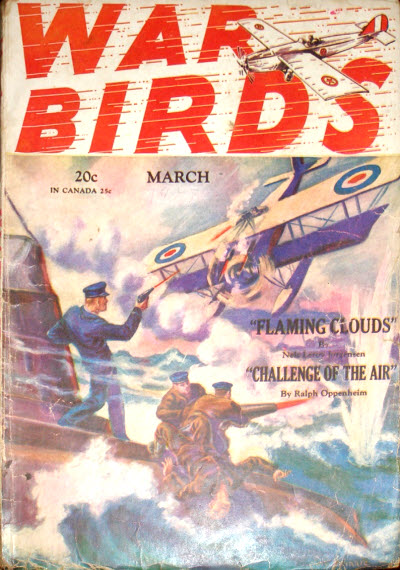 hit the stands in February 1928, it not only contained an exciting tale of Ralph Oppenheim’s inseparable trio The Three Mosquitoes, but it also had a rare factual piece by Mr. Oppenheim. Ralph and his younger brother Garrett had taken a trip to Europe the previous year and just happened to be there at the right time to be able to get to Paris and be there at Le Bourget Field on the 21st of May when Charles Lindbergh successfully ended his trans-Atlantic flight!
hit the stands in February 1928, it not only contained an exciting tale of Ralph Oppenheim’s inseparable trio The Three Mosquitoes, but it also had a rare factual piece by Mr. Oppenheim. Ralph and his younger brother Garrett had taken a trip to Europe the previous year and just happened to be there at the right time to be able to get to Paris and be there at Le Bourget Field on the 21st of May when Charles Lindbergh successfully ended his trans-Atlantic flight!
The editor of WAR BIRDS considers it an outstanding honor to be able to give you this little sketch. Mr. Oppenheim, besides being the most brilliant flying story writer in America, had the priceless privilege of being an eyewitness of one of the most historic moments of modern times—when the great Lindbergh landed the “Spirit of St. Louis†on Le Bourget Field that memorable night in Paris.

Lindbergh uses the lights of Paris to guide him around the Eiffel Tower to Le Bourget Field. (image © lookandlearn.com)
Author’s Note—The following is taken, for the most part, from notes written at Le Bourget Field before and after Lindbergh’s arrival. We (“we†in this case meaning my brother and myself) had come early in the afternoon and had thus secured a wonderful position, on the flat roof of a cafe which was right at the edge of the big field. After a long windy, raining afternoon, during which the crowd grew to a size of about 100,000, the hour when the American should arrive began to draw closer.

When “Lindy†Dropped on Paris
MAY 21st, 1927. 9 to 9:20 P.M. What a mob of people! The roof here is packed behind us, and we are being pushed so hard against our concrete wall (which comes up to our necks) what we’re afraid that either the wall will give or we’ll be crushed into a “shapeless mass.†At our right, in the corner, are three newsreel men, getting movie cameras set. Somewhere in back a Frog newsboy is croaking shrilly: “L’Americain Volant! L’Americain Volant!†A former senator from Missouri says that means that Lindbergh is now over the English Channel. . . . Down below, along the edge of the field, is the real mob—the biggest crowd I’ve ever seen. They are kept from the field itself by a big, strong iron fence. Out on the field, in front of this fence, about two hundred gendarmes are forming a long string to check the crowd if it should attempt to get over that fence. There are no more planes landing or taking off on the field now. The big air-liners which have been coming and going regularly all afternoon, discharging slightly dismal looking passengers and taking on happy, eager ones, are no longer to be seen. They have cleared the field. They have floodlights to illuminate the ground, but they only turn them on every now and then. Economical, these French. Also there are parachute flares. These are shot up like sky-rockets, and the blazing phosphorous comes floating down on a little parachute. Only trouble is these frogs have rotten aim. Some of those damn flares are falling right into the crowd. Each time it happens there’s an excited, panicky shriek. And the idea that one of those flares might fall on our roof is enough to keep us in good suspense. But we don’t need anything to keep us in suspense now. As the moment when the brave American should arrive draws closer and closer, the excitement rises to the highest pitch. Everybody is yelling, shouting, and it seems that everybody has suddenly become a great authority on the subject of aviation. Gosh, these French certainly know how to get excited! There goes that newsboy again: “L’Americain Volant! L’Americain Volant!†And a school-ma’m from Iowa says that means the poor boy’s been lost at sea.
9:20 to 9:30—They are cheering! It seems they hear a plane overhead. We listen. Does sound like a drone up there. More flares—and more suspense. They have the floodlights on again. The cheers are increasing. The gendarmes on the field look worried as the iron fence begins to shake ominously under the pressure of the surging mob behind it.
9:30 to 10:15—Look! Look! Voila! Nom de nom! Everyone is screaming at the top of his or her lungs. We can all hear the drone now. Off to the left it is. We stare in an effort to pierce through the murk. Nothing yet, nothing yet. Then—
The earth shakes with a mighty reverberating cheer. In the darkness up there appears a floating, whitish shape. It is coming down, gliding for the field! It is Lindbergh! God Almighty!
Now we can clearly distinguish the graceful silver monoplane. The crowd is going crazy. The plane is landing. The great pilot, cool and collected, carefully keeps away from all signs of the crowd. He brings his ship down way across the field, just opposite our roof. It is a wonderful and an astonishingly quick landing—the best we’ve seen on this field. And there was something incongruous about the way that plane, having just come way from New York, simply dropped out of the sky and landed.

Before the Spirit of St. Louis rolls to a stop hell breaks loose at Le Bourget. With a mighty shove, the people surge right through that iron fence like a tremendous tidal wave. The gendarmes? Drowned, swallowed in that flood. It is a sight indeed, that mob rushing out towards the plane. It makes you feel insignificant to see all those people. All over flashlights are popping, cameras clicking, and men and women shouting like mad. The cameramen tackle the mob like football players in their efforts to get to the plane. The people on our roof are—well, they’re raising the roof. Some Frog is using my back as a step-ladder, and another is trying to make a foot-stool out of my neck. Tables collapse as people try to stand on them to get a look. One or two crazy fools actually jump off the roof, onto the shed below. A fifteen foot drop! The plane out there is surrounded now. And it seems almost that the mob is lifting that big monoplane on its shoulders and carrying it around. They’re bringing the great Lindbergh in. Cheers! “Vive l’Americain! Vive Londberje (as the Frogs pronounced it)!†Where is he? We think we catch a glimpse of him in the midst of a little circle, around which the crowd is thickest. How they bring him in is a mystery, but they get him to the building right next to ours, and hold the crowd out. The crowd storms outside, yelling in a mighty chorus: “Let us see! Let us see!†From our roof we can see the lighted, curtained window of the room where they have him. We see lots of people in there, and often we think we get glimpses of the American—but we will never know if we really did, though we saw him twice on future occasions (both in Paris and on the day of his arrival in New York).

Now the French windows are opened over in that building, and a man steps out on the balcony. It is the American ambassador. He makes a speech, which nobody hears. But nobody has to hear, because all realize that an epoch-making event has just occurred, and that Charles A. Lindbergh, later to be known as “Plucky Lindy†and “The Lone Eagle†and “Slim,†has succeeded in making the first non-stop flight from New York to Paris.

For a sense of the scene at the time you can check out some newsreels from the whole journey—AP (British Pathé)—or just the day—British Pathé and Periscope Film. And the USA Today actually has a decent article with some good photos from the 90th anniversary of the historic flight.
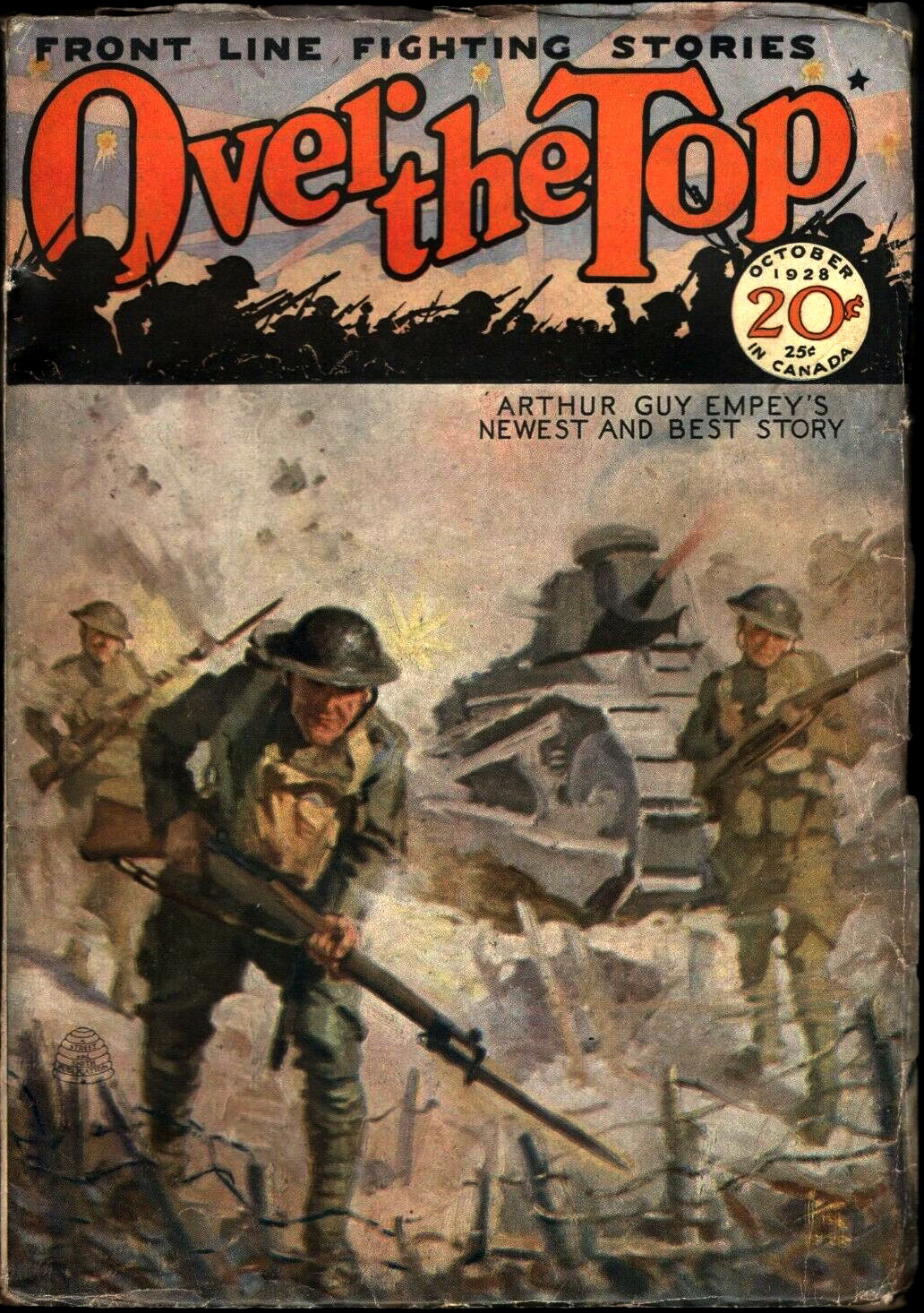 a story by Lloyd Leonard Howard from the pages of Street & Smith’s short lived Over The Top magazine. Over The Top was a magazine featuring war stories by the likes of Arthur Guy Empey, George Bruce, Raoul Whitfield among others. One of those others being Lloyd Leonard Howard who had stories in about a dozen of the 21 issues. Several of them featured a pilot by the name of Lieutenant Buck Manley and his pal Lieutenant “Stubby†Davis. Stubby doesn’t appear in this first story where Buck, separated from his flight in enemy hell skies, tries to get back to his home base—or at least friendlier skies—before his plane and his luck can go no further!
a story by Lloyd Leonard Howard from the pages of Street & Smith’s short lived Over The Top magazine. Over The Top was a magazine featuring war stories by the likes of Arthur Guy Empey, George Bruce, Raoul Whitfield among others. One of those others being Lloyd Leonard Howard who had stories in about a dozen of the 21 issues. Several of them featured a pilot by the name of Lieutenant Buck Manley and his pal Lieutenant “Stubby†Davis. Stubby doesn’t appear in this first story where Buck, separated from his flight in enemy hell skies, tries to get back to his home base—or at least friendlier skies—before his plane and his luck can go no further!




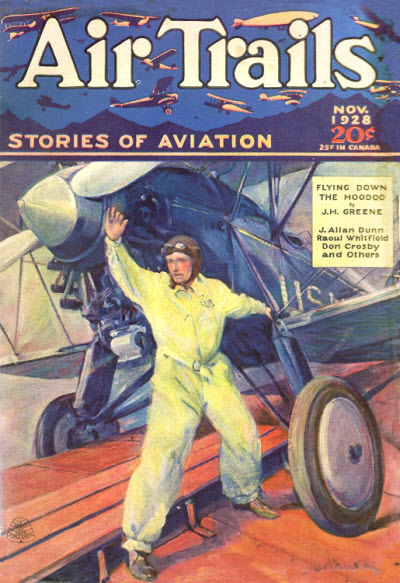 another of
another of 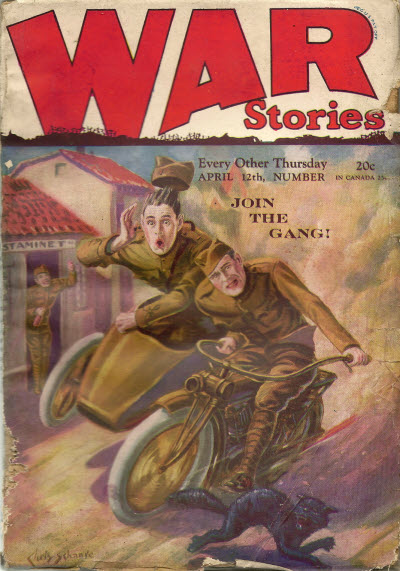 the third and final of three Ralph Oppenheim’s Three Mosquitoes stories we’re featuring this March for Mosquito Month! And this one’s a doozy! Kirby gets the unenviable job of test flying the new type Spad and putting it through its paces—including trying it in combat and shooting down a plane. But, under no circumstances should he take the new plane over the lines! Unfortunately that’s just what Kirby did! Read all about it in Ralph Oppenheim’s “An Ace of Spads” from the April 12th, 1928 issue of War Stories!
the third and final of three Ralph Oppenheim’s Three Mosquitoes stories we’re featuring this March for Mosquito Month! And this one’s a doozy! Kirby gets the unenviable job of test flying the new type Spad and putting it through its paces—including trying it in combat and shooting down a plane. But, under no circumstances should he take the new plane over the lines! Unfortunately that’s just what Kirby did! Read all about it in Ralph Oppenheim’s “An Ace of Spads” from the April 12th, 1928 issue of War Stories!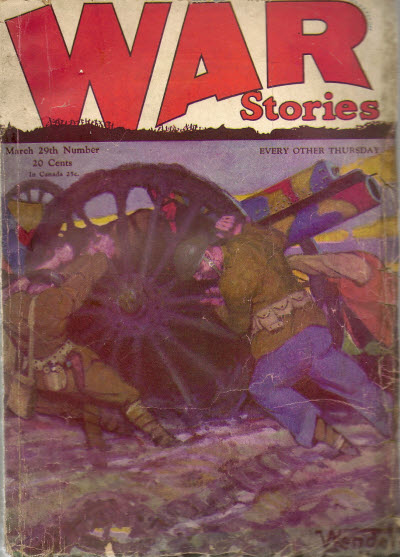 the second of three tales of Ralph Oppenheim’s Three Mosquitoes we’re featuring this March for Mosquito Month! This week, the intrepid trio is tasked with getting valuable information from behind German lines—but it’s a job for only one man which unfortunately turns into one man at time as each of the Mosquitoes is sent off to garner the information when the previous one fails to return. From the March 29th, 1928 issue of War Stories, it’s The Three Mosquitoes in “An Ace in the Hole!”
the second of three tales of Ralph Oppenheim’s Three Mosquitoes we’re featuring this March for Mosquito Month! This week, the intrepid trio is tasked with getting valuable information from behind German lines—but it’s a job for only one man which unfortunately turns into one man at time as each of the Mosquitoes is sent off to garner the information when the previous one fails to return. From the March 29th, 1928 issue of War Stories, it’s The Three Mosquitoes in “An Ace in the Hole!” hit the stands in February 1928, it not only contained an exciting tale of Ralph Oppenheim’s inseparable trio The Three Mosquitoes, but it also had a rare factual piece by Mr. Oppenheim. Ralph and his younger brother Garrett had taken a trip to Europe the previous year and just happened to be there at the right time to be able to get to Paris and be there at Le Bourget Field on the 21st of May when Charles Lindbergh successfully ended his trans-Atlantic flight!
hit the stands in February 1928, it not only contained an exciting tale of Ralph Oppenheim’s inseparable trio The Three Mosquitoes, but it also had a rare factual piece by Mr. Oppenheim. Ralph and his younger brother Garrett had taken a trip to Europe the previous year and just happened to be there at the right time to be able to get to Paris and be there at Le Bourget Field on the 21st of May when Charles Lindbergh successfully ended his trans-Atlantic flight!




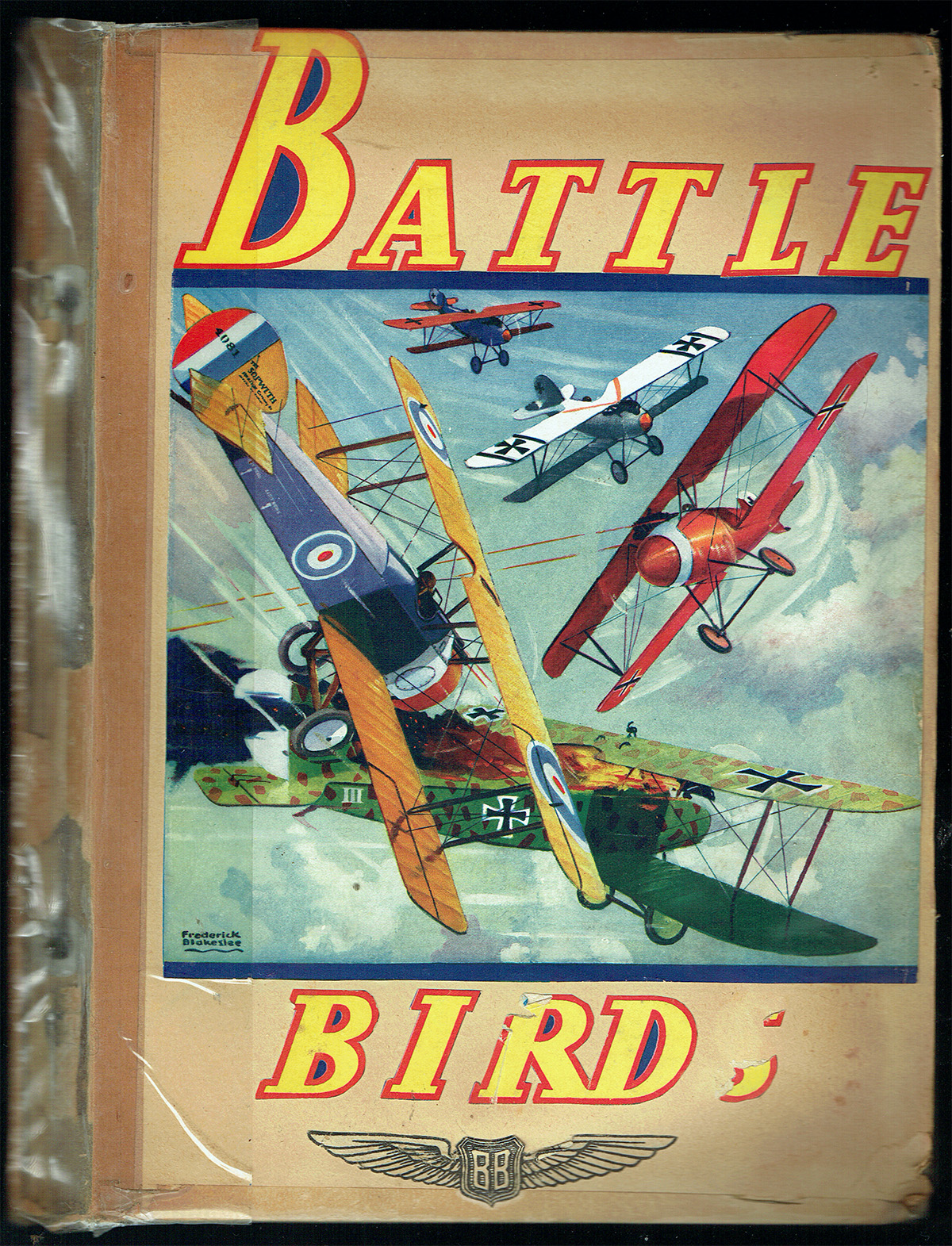 One of the areas that Robert was interested in were the new and exciting Air Races! The races included a variety of events, like landing contests, glider demonstrations, airship fights, parachute-jumping contests, and of course, the races themselves—both closed-course and cross-country. The cross-country races were usually from Portland or Los Angeles to Cleveland. Robert included information on five different air shows from 1928-1933, and his ticket stub for two of them.
One of the areas that Robert was interested in were the new and exciting Air Races! The races included a variety of events, like landing contests, glider demonstrations, airship fights, parachute-jumping contests, and of course, the races themselves—both closed-course and cross-country. The cross-country races were usually from Portland or Los Angeles to Cleveland. Robert included information on five different air shows from 1928-1933, and his ticket stub for two of them.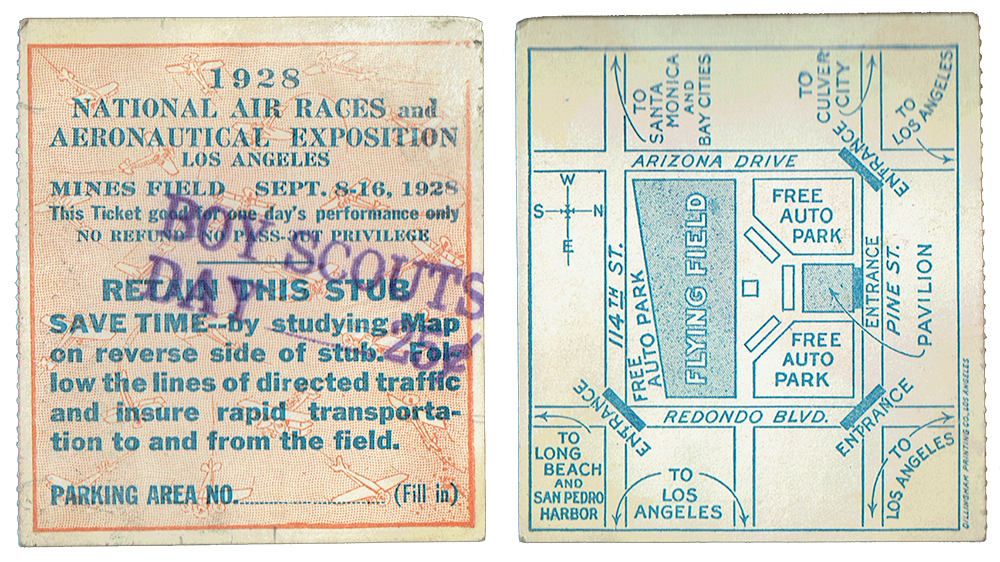
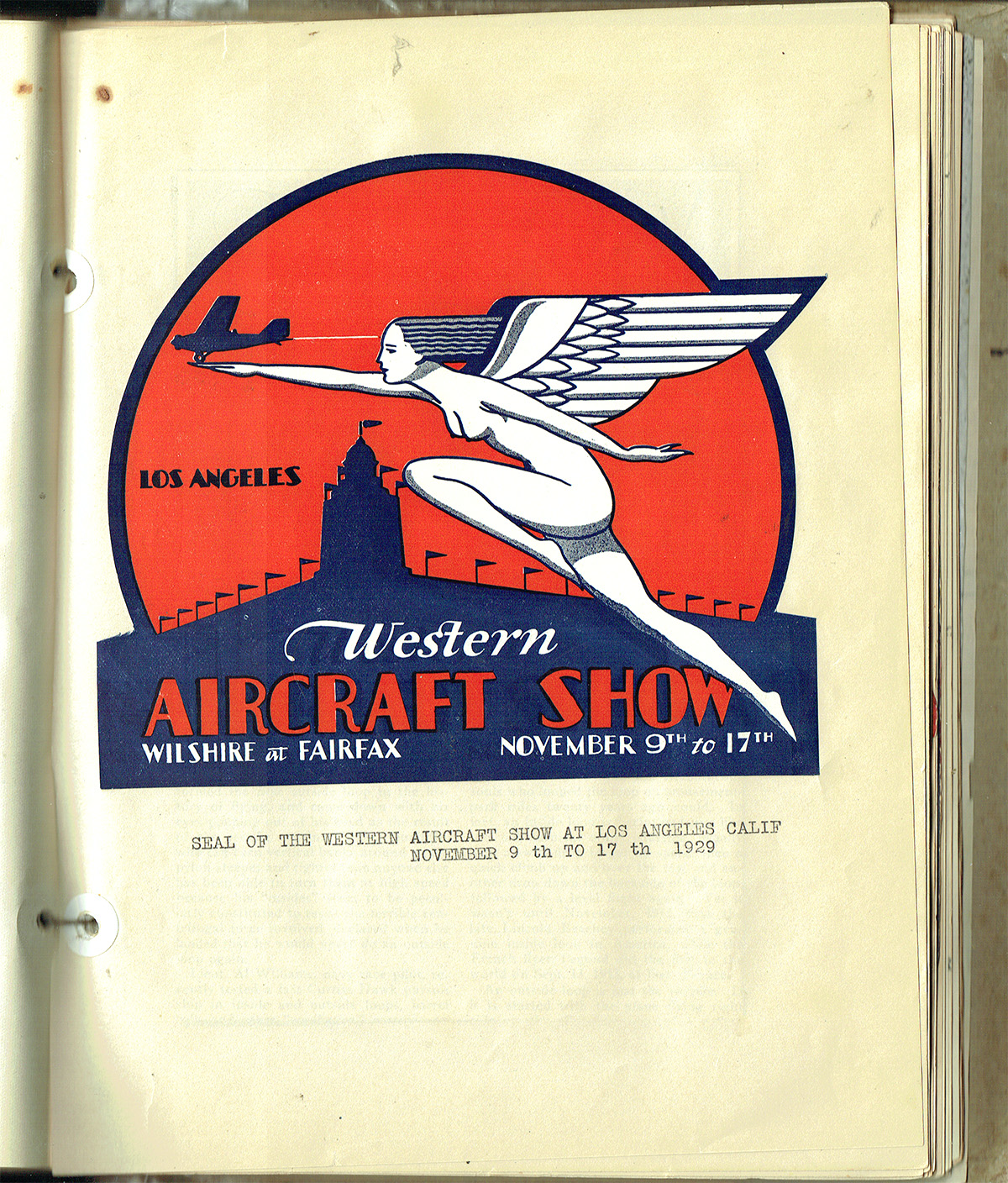
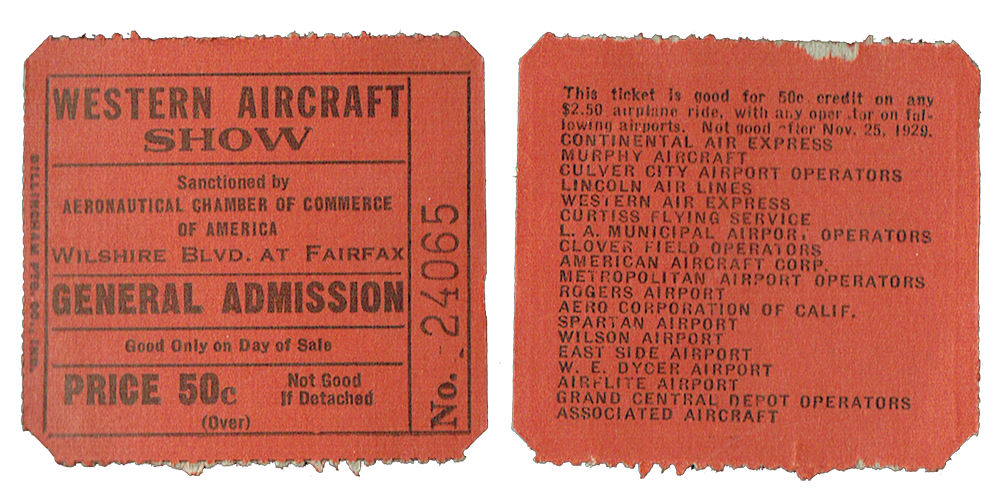
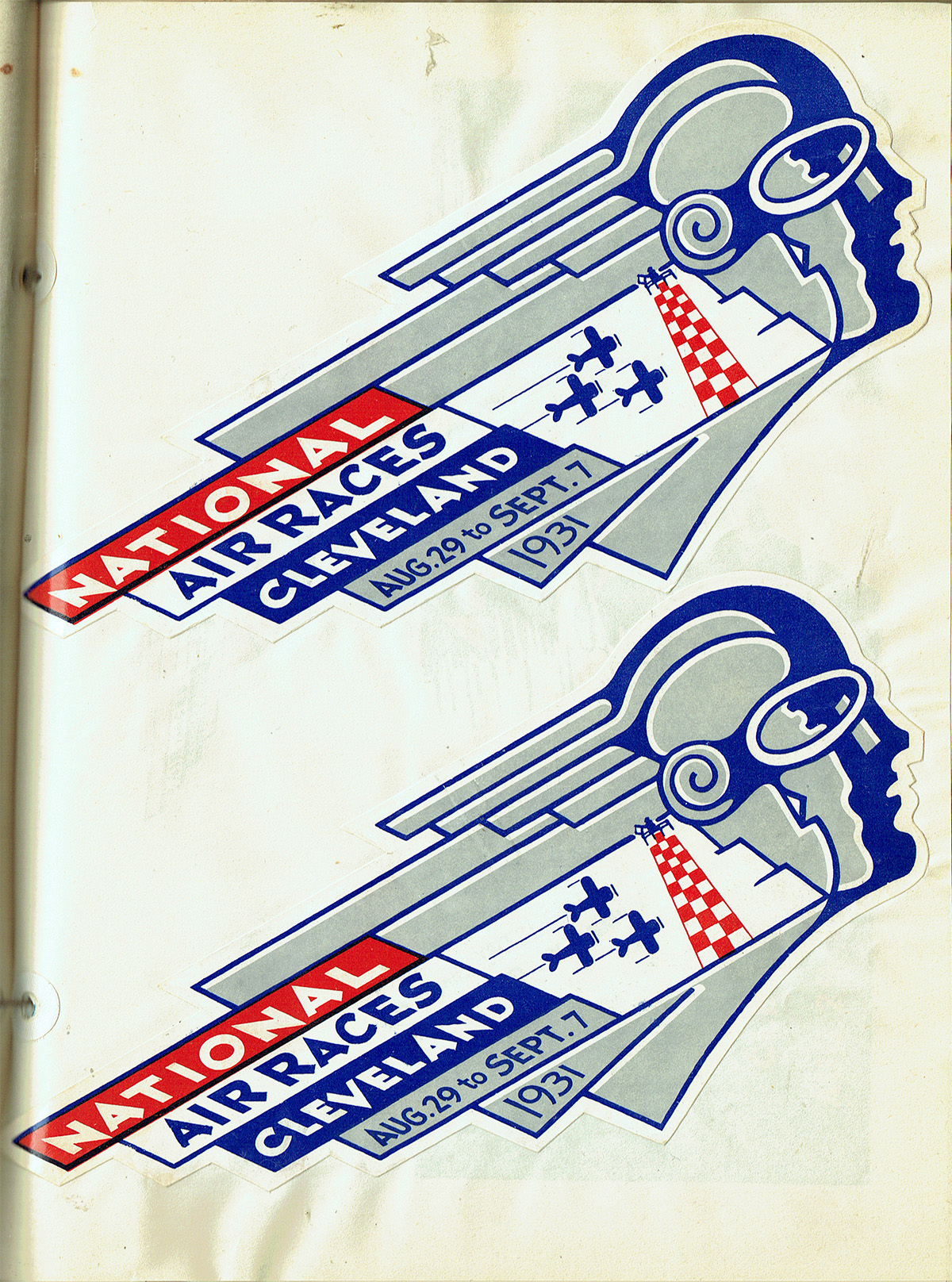
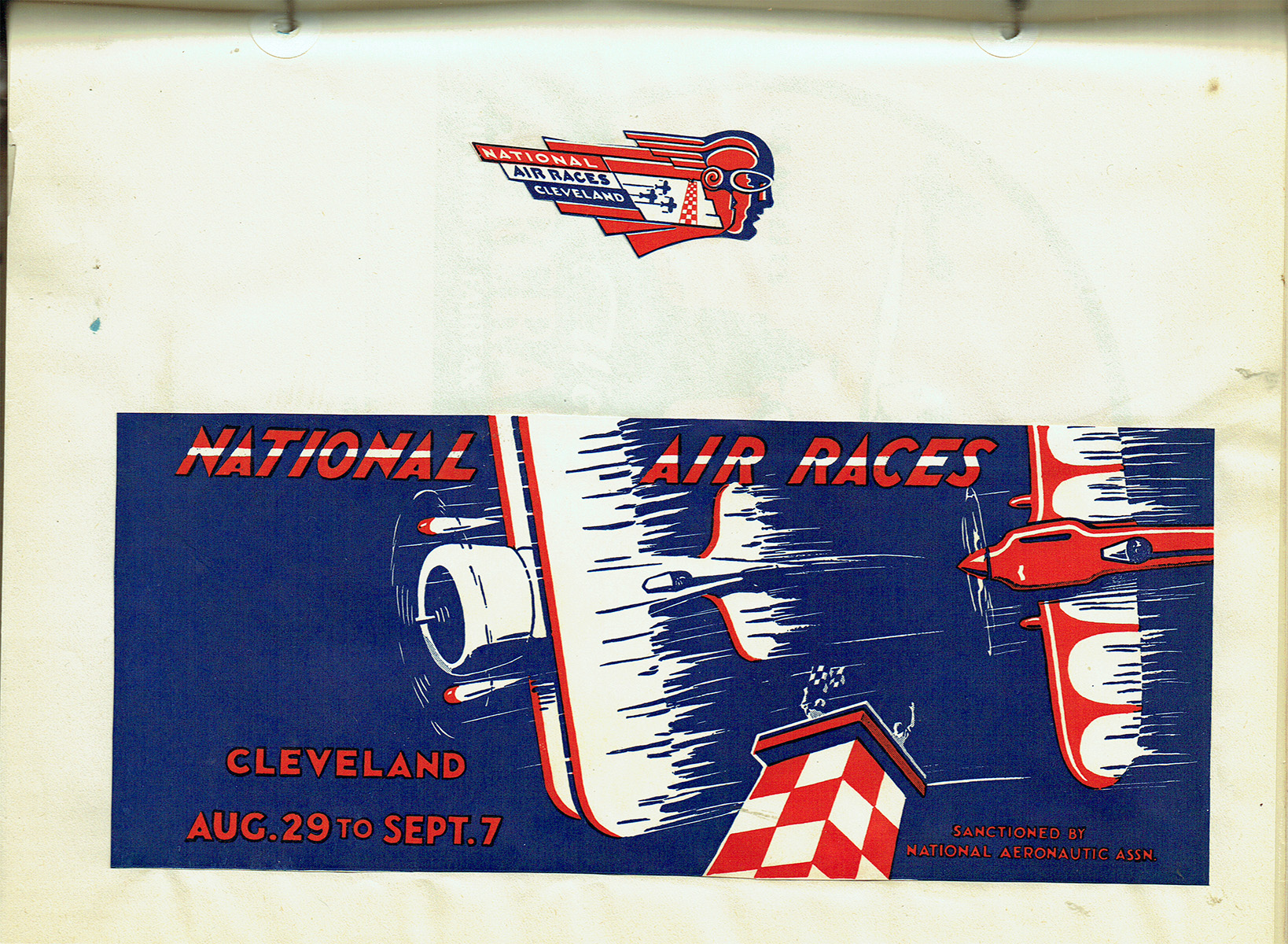
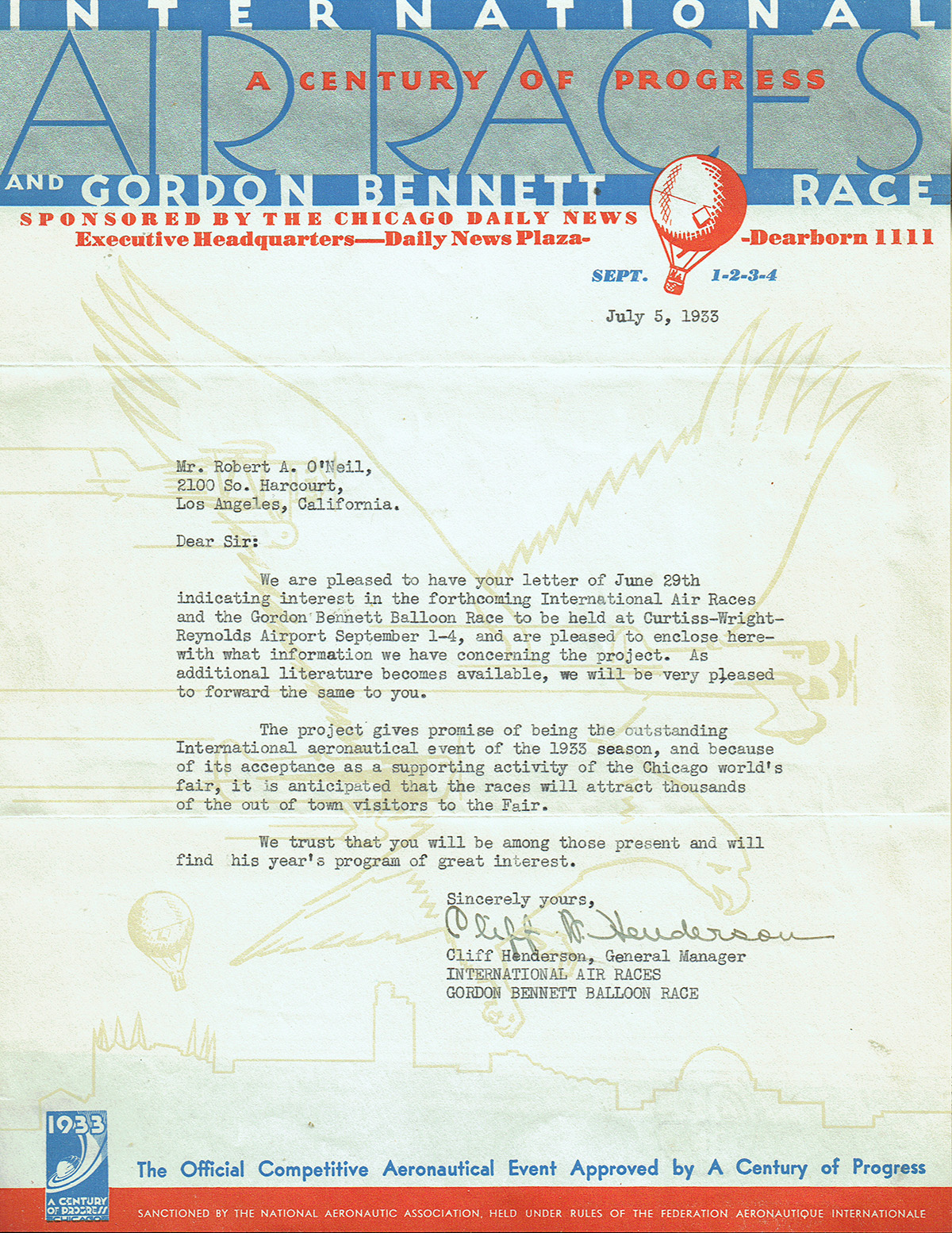
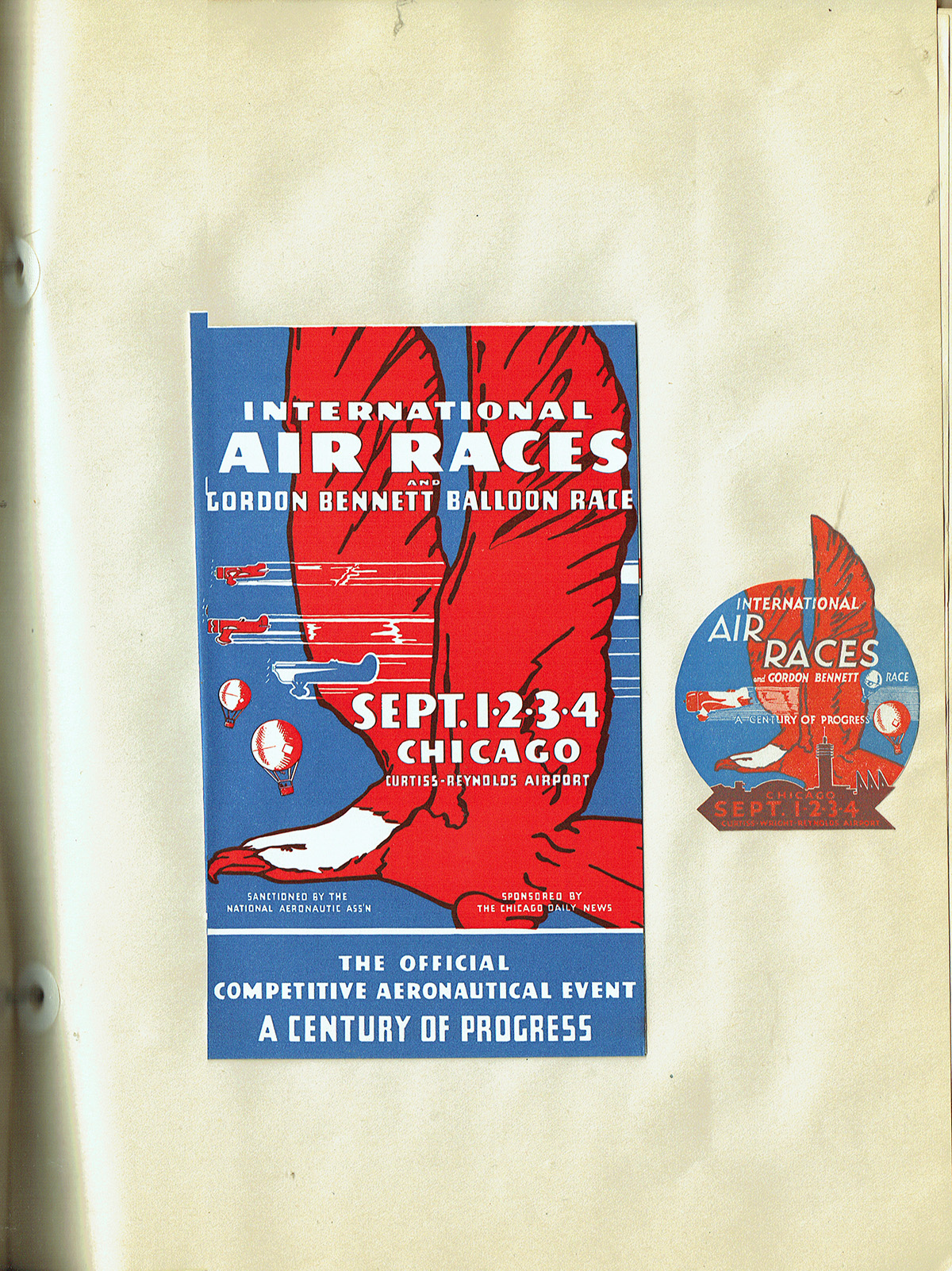
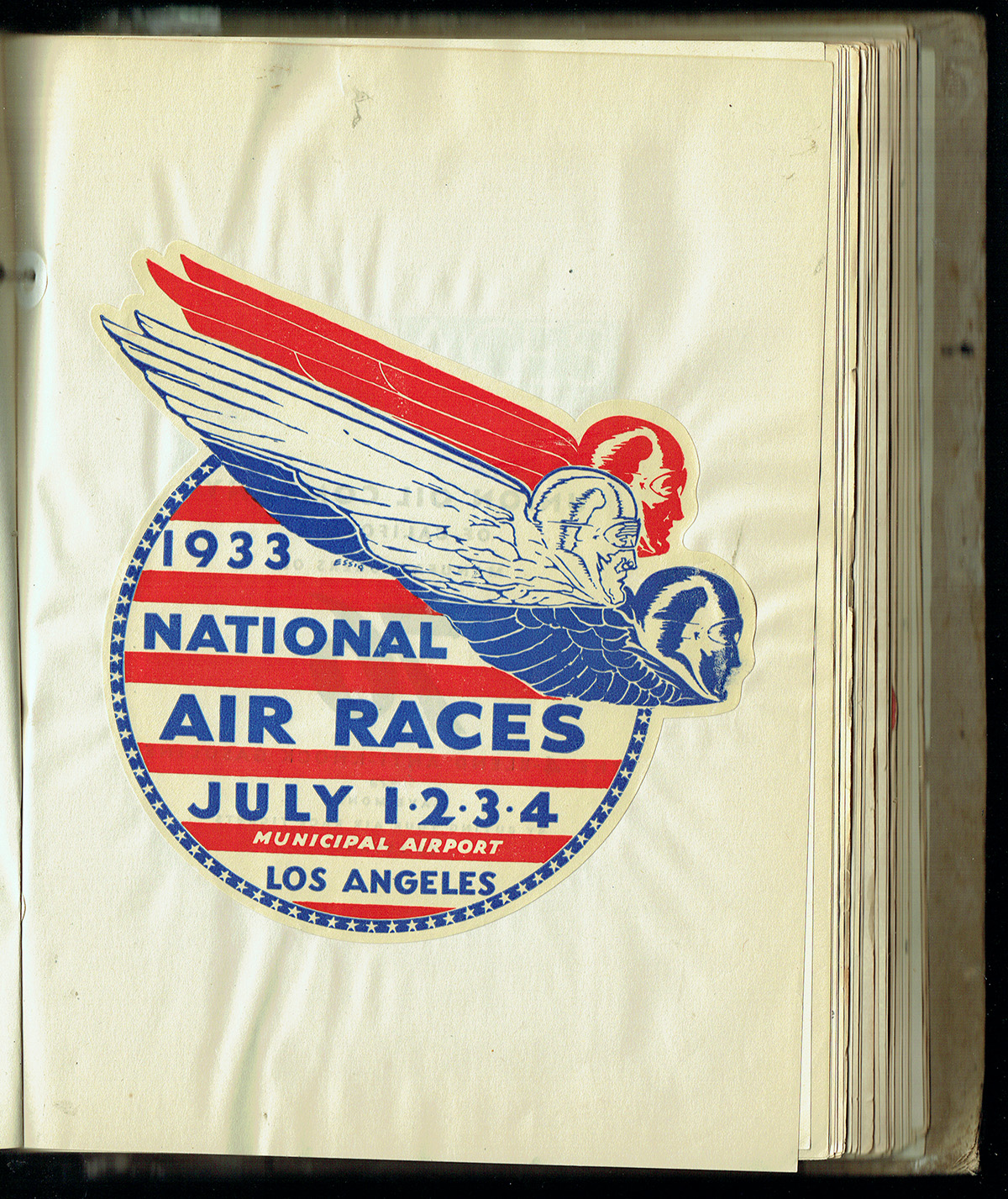
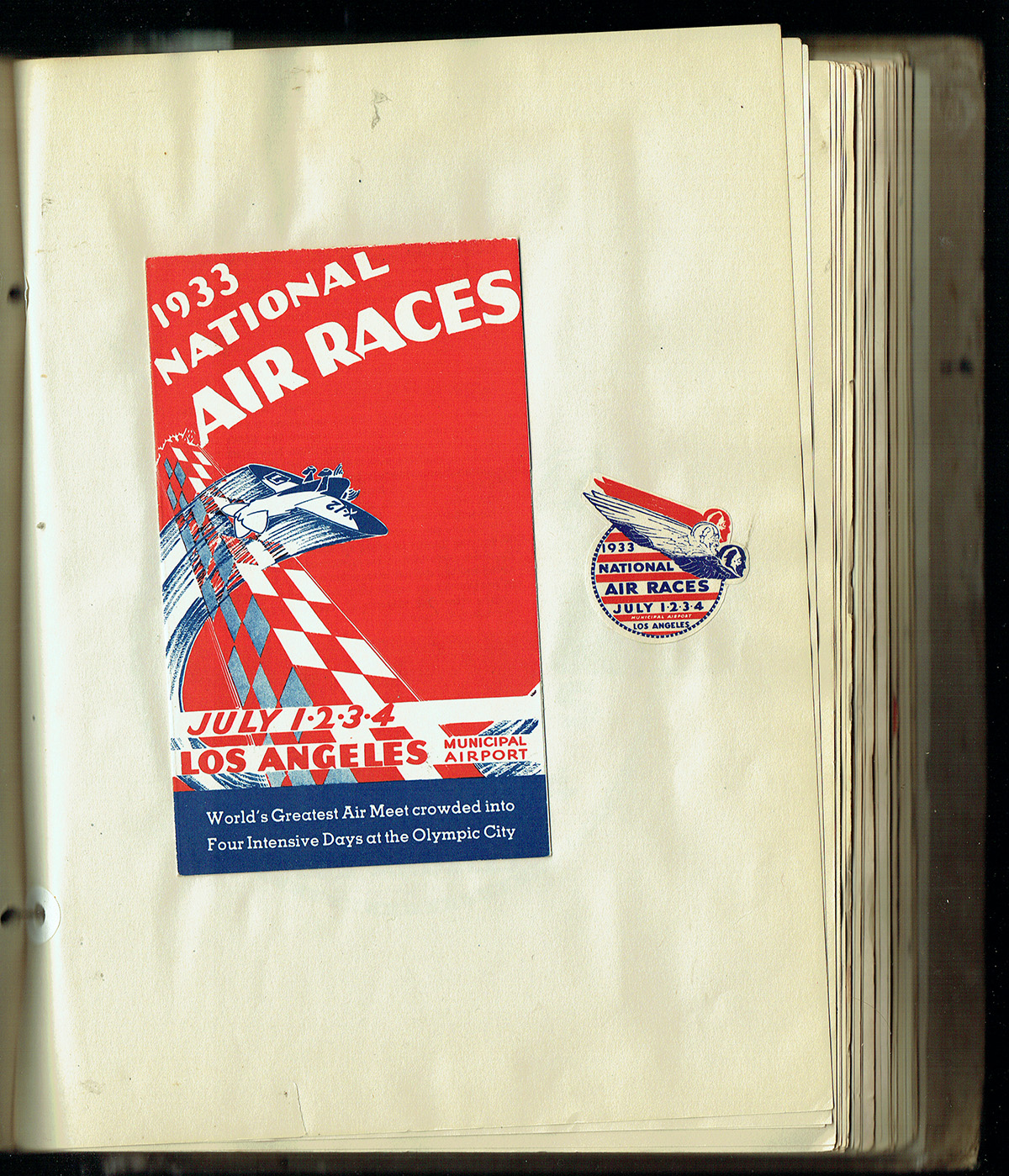
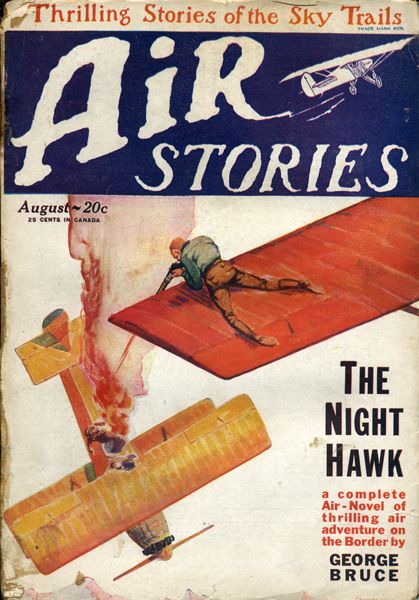 a short story by renowned pulp author Frederick C. Davis. Davis is probably best remembered for his work on Operator 5 where he penned the first 20 stories, as well as the Moon Man series for Ten Detective Aces and several other continuing series for various Popular Publications. He also wrote a number of aviation stories that appeared in Aces, Wings and Air Stories.
a short story by renowned pulp author Frederick C. Davis. Davis is probably best remembered for his work on Operator 5 where he penned the first 20 stories, as well as the Moon Man series for Ten Detective Aces and several other continuing series for various Popular Publications. He also wrote a number of aviation stories that appeared in Aces, Wings and Air Stories. 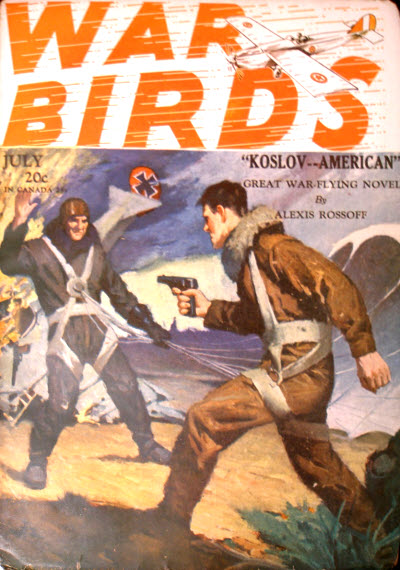 a story from the pen of A. Kinney Griffith. Griffith penned a number of stories featuring Rex “Wrecks” Norcross that ran in the pages of War Birds and Sky Riders in the late ’20’s. He gained his nickname by crashing his first time back from patrol in a shot-up plane that was barely holding itself together, but as time went on he returned as less of a wreck, while wrecking the German planes!
a story from the pen of A. Kinney Griffith. Griffith penned a number of stories featuring Rex “Wrecks” Norcross that ran in the pages of War Birds and Sky Riders in the late ’20’s. He gained his nickname by crashing his first time back from patrol in a shot-up plane that was barely holding itself together, but as time went on he returned as less of a wreck, while wrecking the German planes!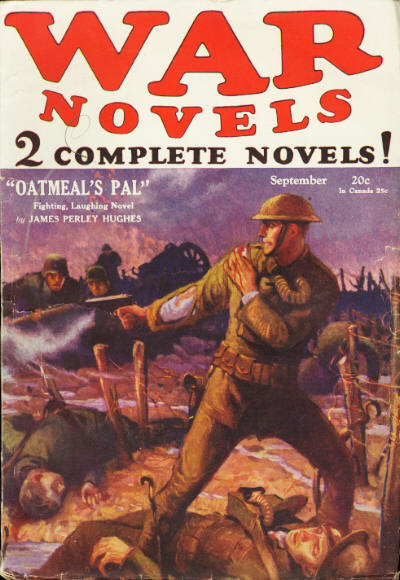 Mosquito Month we have a non-Mosquitoes story from the pen of Ralph Oppenheim. Lt. Jim Edwards knew he was the worst flyer in the squadron. When the C.O. called him to his office he was sure he was going to be sent to Blois in disgrace—instead the C.O. offers him a mission that could mean spending the rest of the war in a German prisoner of war camp, but when push came to shove, it turns out Edwards could shove with the best of them! From the September 1928 issue of War Novels it’s “Dreadnoughts of the Air!”
Mosquito Month we have a non-Mosquitoes story from the pen of Ralph Oppenheim. Lt. Jim Edwards knew he was the worst flyer in the squadron. When the C.O. called him to his office he was sure he was going to be sent to Blois in disgrace—instead the C.O. offers him a mission that could mean spending the rest of the war in a German prisoner of war camp, but when push came to shove, it turns out Edwards could shove with the best of them! From the September 1928 issue of War Novels it’s “Dreadnoughts of the Air!”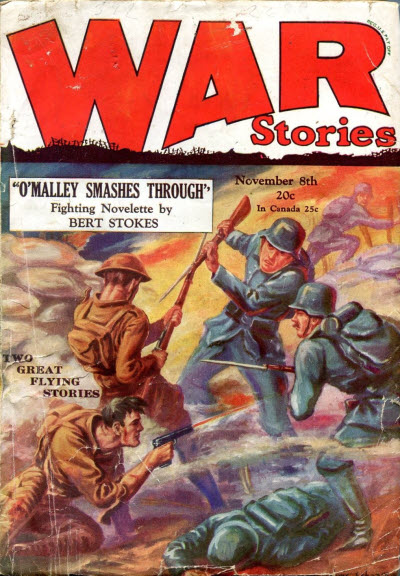 the third and final of three Ralph Oppenheim’s Three Mosquitoes stories we’re featuring this March for Mosquito Month! And this one’s a doozy! The Boche have some new super-gun that has been ranging the Allied munitions factory, getting closer every time. Kirby, Carn and Travis are tasked with finding the unfindable gun and putting it out of commission before it does indeed hit the munitions factory! It’s another rip-roaring nail-biter from the pages of the November 8th, 1928 issue of War Stories—The Three Mosquitoes must “Get That Gun!”
the third and final of three Ralph Oppenheim’s Three Mosquitoes stories we’re featuring this March for Mosquito Month! And this one’s a doozy! The Boche have some new super-gun that has been ranging the Allied munitions factory, getting closer every time. Kirby, Carn and Travis are tasked with finding the unfindable gun and putting it out of commission before it does indeed hit the munitions factory! It’s another rip-roaring nail-biter from the pages of the November 8th, 1928 issue of War Stories—The Three Mosquitoes must “Get That Gun!”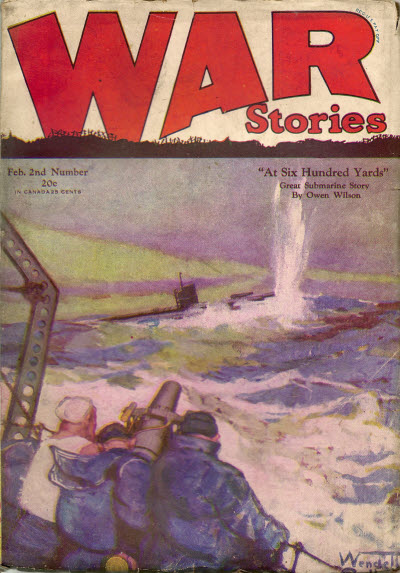 the second of three tales of Ralph Oppenheim’s Three Mosquitoes we’re featuring this March for Mosquito Month! This week, Kirby experiences the pitfalls of pride when the Boche form an All-Ace squadron called the Avenging Yellow Jackets to take down the pesky Mosquitoes—while Shorty Carn and the lanky Travis urge caution, Kirby’s all guns ahead ready to rush in and take on all the Aces Germany can dish out. Problem is, believing his own press, he rushes into things foolishly and finds himself in “Hot Air!” From the February 2nd, 1928 issue of War Stories—
the second of three tales of Ralph Oppenheim’s Three Mosquitoes we’re featuring this March for Mosquito Month! This week, Kirby experiences the pitfalls of pride when the Boche form an All-Ace squadron called the Avenging Yellow Jackets to take down the pesky Mosquitoes—while Shorty Carn and the lanky Travis urge caution, Kirby’s all guns ahead ready to rush in and take on all the Aces Germany can dish out. Problem is, believing his own press, he rushes into things foolishly and finds himself in “Hot Air!” From the February 2nd, 1928 issue of War Stories—  Frederick C. Painton’s letters he wrote home while serving with the American Expeditionary Forces in WWI, this week we feature a short tale Painton had in the pages of War Stories. It’s the tale of the Schmidt brothers—one had left home in 1912 and eventually found himself in the German Navy having risen the ranks to become their most feared submarine captain. The other brother remained at home and signed up when America entered the war, putting his talents to use for the US Navy listening for subs never thinking he would one day be hunting down his own beloved brother!
Frederick C. Painton’s letters he wrote home while serving with the American Expeditionary Forces in WWI, this week we feature a short tale Painton had in the pages of War Stories. It’s the tale of the Schmidt brothers—one had left home in 1912 and eventually found himself in the German Navy having risen the ranks to become their most feared submarine captain. The other brother remained at home and signed up when America entered the war, putting his talents to use for the US Navy listening for subs never thinking he would one day be hunting down his own beloved brother!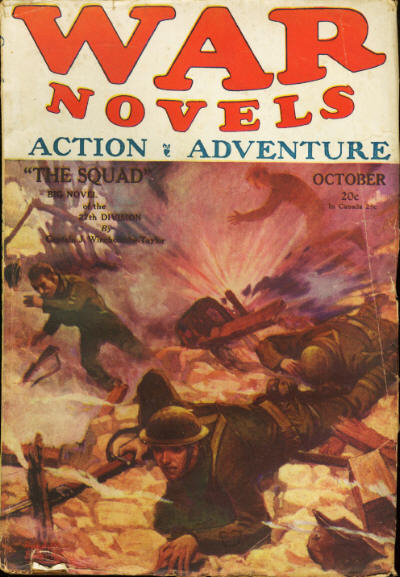 Mosquitoes—the unseasonably warm weather has brought the Mosquitoes out of hibernation to help get through the cold winter months, at Age of Aces dot net it’s our fourth annualMosquito Month! We’ll be featuring that wiley trio in three early tales from the Western Front. To start things off we have a tale featuring Travis from 1928. There are no secrets between The Three Mosquitoes—if that’s the case, then what’s Travis been doing on his early morning test runs? That’s what the impetuous Kirby and his pal Shorty want to find out. And they get more than a proverbial worm when they’re up with the “Early Birds.” From War Novels, October 1928—
Mosquitoes—the unseasonably warm weather has brought the Mosquitoes out of hibernation to help get through the cold winter months, at Age of Aces dot net it’s our fourth annualMosquito Month! We’ll be featuring that wiley trio in three early tales from the Western Front. To start things off we have a tale featuring Travis from 1928. There are no secrets between The Three Mosquitoes—if that’s the case, then what’s Travis been doing on his early morning test runs? That’s what the impetuous Kirby and his pal Shorty want to find out. And they get more than a proverbial worm when they’re up with the “Early Birds.” From War Novels, October 1928—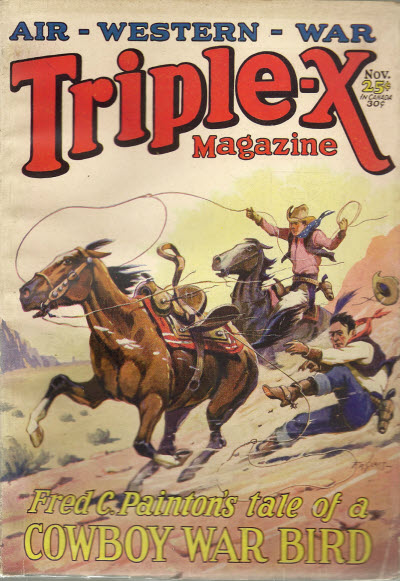 a story from the pen of a prolific pulp author and venerated newspaper man—Frederick C. Painton.
a story from the pen of a prolific pulp author and venerated newspaper man—Frederick C. Painton.